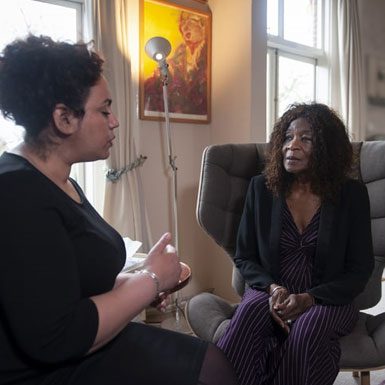Job loss, financial insecurity, loneliness, grief and social loss, increased symptoms of depression and anxiety, and lack of food security and other necessary resources are all contributing social risk factors for death by suicide. Combine that with a deadly pandemic and widespread uncertainty about the future for many Americans, and the healthcare workforce is faced with a climate that provides all the components to increase suicide rates across the U.S. This has made knowing how to perform suicide risk assessments a growing need for clinicians.
Early reports surprisingly suggest that the rates of death by suicide dropped overall in 2020. Suicide has just been nudged out of the top 10 causes of death, largely due to the number of deaths attributed to COVID-19, which took the number three spot in 2020. This downward trend started even before the pandemic with rates of death by suicide seeing a drop in 2019.
While these are hopeful signs, it is important to note the race-related disparity in these trends. The overall decrease in death by suicide is attributed to large drops in suicide rates for White and Native American populations. However, among Asian, Latinx and Hispanic, and Black populations, the rates of suicide increased in both 2019 and 2020. Factors such as lack of access to social resources, social trauma, increase in racism, and inadequate healthcare access are likely major contributors for this disparity.
Regardless of the current rates, suicide risk should remain a top priority for health care providers. Death by suicide is preventable. An alert and organized healthcare team can be a protective factor for clients at risk of suicide. Approximately 64% of all individuals who die by suicide had a healthcare visit and 44% had a mental health visit within one month of their death. Attentive, responsive healthcare providers can help clients find resources and support to address the stressors that increase their risk for suicide.
To reduce risk of suicide, make sure to train your staff in the following areas:
- assessing clients thoroughly for suicide risk and intent
- using proper language
- collaborating with other healthcare providers and community resources
Suicide risk assessments for suicidal ideation
When assessing for suicidal ideation and risk of suicide, it is common for providers to feel overwhelmed or uncomfortable. Most frequently, providers report not wanting to make the client uncomfortable, so they rush through the process, which often results in clients at risk for suicide falling through the cracks.
Avoid rushing through or minimizing the assessment.
Your client is likely nervous about disclosing any suicidal ideation or risk factors to you. Give them the time to share in order to prevent appearing disinterested. Clients that notice that their providers are uncomfortable are less likely to disclose and more likely to minimize their circumstances. Consider the following tips when going through the suicide risk assessment process:
| Avoid this | Try this instead |
|
|
What to say and how to say it when performing suicide risk assessments

When asking questions during a suicide risk assessment or talking to clients about suicidal ideation, it is important that healthcare providers use normalizing language. Many people will experience thoughts of being better off dead or ‘wanting it all to end’ at some point in their life. That does not mean they want to die. Normalize the experience by letting clients know they are not alone in feeling this way. Remind them that they have protective factors by asking about the people, activities, and experiences that bring them joy.
Finally, focus on creating a thorough plan to keep them safe and to help them avoid an emergency department visit. Here are some additional tips:
- Explain suicidal ideation: Help the client understand that many people will at some point have thoughts of being better off dead or feeling burdened by the challenges of life. This helps the client know that there is not something wrong with them. Remind them that these feelings are temporary and that they have other options.
- Reassure them that you will make decisions together as much as possible: Let clients know that being admitted to a hospital is not the first option you will pursue together. This is a common fear for clients. Alleviating it early allows for a more open dialogue. Be honest about your priority to keep them safe and let them know what keeping them safe means.
- Explore resources and social supports: Discuss ways the client can keep themselves safe when thoughts about being better off dead creep up. Ask about friends or family members they can reach out to in the event that suicidal ideation worsens.
- Plan for days when suicidal ideation is worse: Create a specific plan with names, phone numbers, and activities that the client can put into action when suicidal thoughts worsen.
- Avoid interrogation style techniques: You will likely have more success with a conversational style assessment than speedily tackling a set of questions. Asking open ended questions and encouraging clients to elaborate on their answers will provide you with important context on their level of risk, access to means, and presence of intent.
- Remember: Talking about suicide does not cause death by suicide. Avoiding the conversation about suicide increases stigma, contributes to feelings of not being valued or worthy, and limits access to life-saving resources and social support.
Collaborating for healthcare and community resources
As mentioned above, common factors to keep an eye out for during a suicide risk assessment are relational problems, social isolation, loneliness, history of abuse, financial or employment problems, alcohol or substance use disorders, acute or persistent physical health problems, feelings of hopelessness, or extreme mood swings.
 To properly attend to the multitude of risk factors associated with suicidal ideation it is crucial to create a broad network of resources for the client. This includes access to quality, affordable healthcare and a healthcare team that is aware of both physical and mental health conditions. But it also includes social support, specifically someone who can check in and genuinely cares, which can mean encouraging the client to bring loved ones into their healthcare appointments.
To properly attend to the multitude of risk factors associated with suicidal ideation it is crucial to create a broad network of resources for the client. This includes access to quality, affordable healthcare and a healthcare team that is aware of both physical and mental health conditions. But it also includes social support, specifically someone who can check in and genuinely cares, which can mean encouraging the client to bring loved ones into their healthcare appointments.
Also, religious or cultural beliefs that value life are one of the most effective protective factors, so building relationships with faith communities and influential community leaders can help create another resource for clients.
Finally, access to community supports including homeless shelters, job training and placement organizations, food shelters, transportation services, and community centers can help you provide clients with direct connections to the resources they need to improve their quality of life.
Healthcare providers have the unique opportunity to lead the charge when it comes to preventing suicides. Talking about suicide and normalizing the feelings that often accompany suicide are crucial to decreasing the rates of death by suicide.
By training staff to create space for honest conversations and build community relationships to provide resources for those in need, healthcare organizations can help reduce the stigma around suicidal ideation and improve quality of life for clients most at risk.
Editor’s Note: This blog post was recognized as a Gold winner in the Media/Publications category of the Spring 2022 Digital Health Awards.

Suicide Prevention Training: Identifying and Responding to Risk
No matter your care setting, having up-to-date knowledge on identifying, assessing, and responding to suicide risk in persons served and staff should be an integral part of your practice. See how Relias can help.
Learn More →






